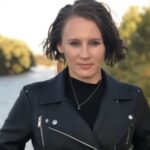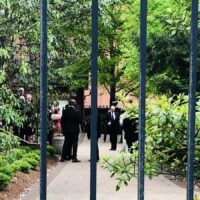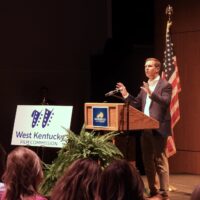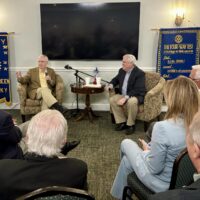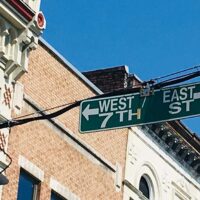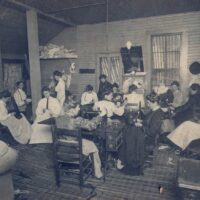Kentuckians who are deaf or hard of hearing can get free radios designed to alert other senses about dangerous weather through a new program named after the late Virginia Moore.
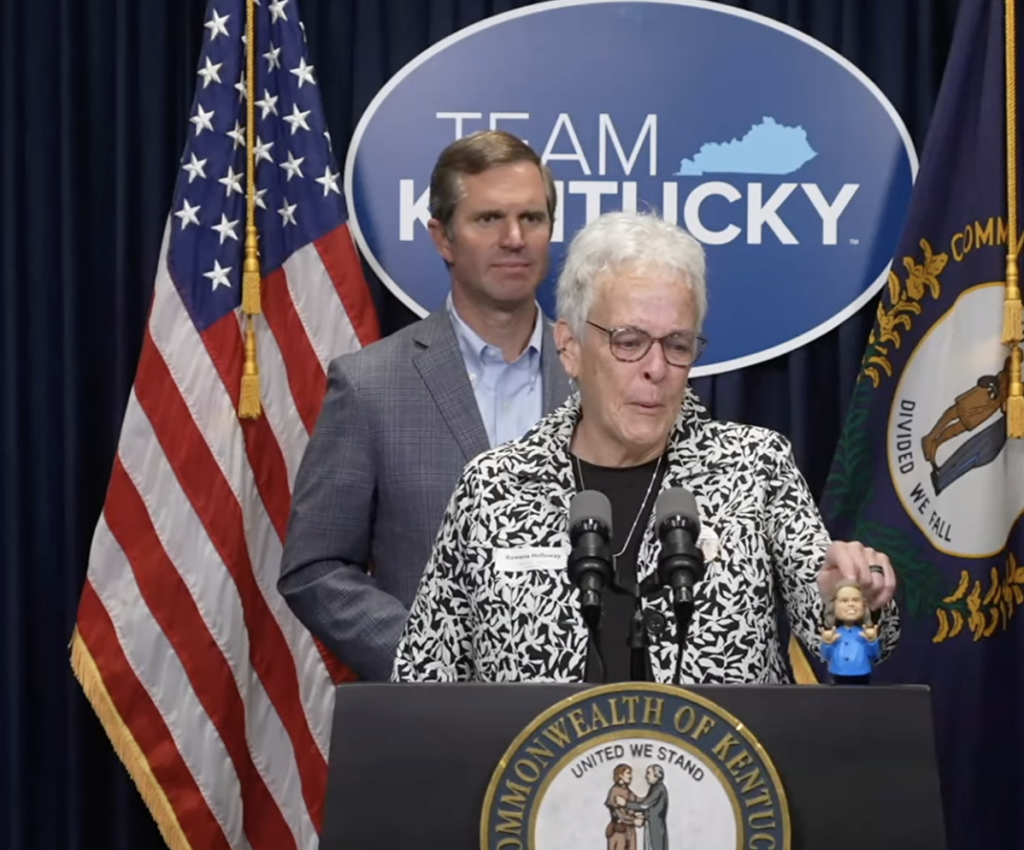
Moore died on Derby Day in 2023 at 61. Before that, she interpreted in American Sign Language news of many deaths and announcements about COVID-19’s hold on Kentucky for Gov. Andy Beshear during the worst of the pandemic.

Moore served as executive director of the Kentucky Commission on the Deaf and Hard of Hearing. People who knew her have described her as a fierce advocate for the hard of hearing community.
Now, an emergency preparedness program called “Moore Safe Nights” will honor that legacy.
The Kentucky Division of Emergency Management (KYEM) used federal grant money to buy 700 radios that have vibrating and bright spotlight attachments specifically for people with hearing impairments.
The vibrating attachment can go under a person’s pillow and shake them during an alarm. The other can be attached to a bed frame and it will brightly flash in the dark. They will also display text of alerts from the National Weather Service.
“As Kentuckians know all too well, severe weather can strike at any hour; the most dangerous time is when people are sleeping,” Beshear said during a Thursday press conference. “The deaf and hard of hearing community is particularly vulnerable during this time, since they cannot hear the various alarms and severe weather sirens upon which most of us rely.”
Anita Dowd, who serves as the executive director for the Kentucky Commission on the Deaf and Hard of Hearing, called the radios a “game changer.”
“As one of the 700,000 Kentuckians with hearing loss, and mama to two daughters with hearing loss, I can personally attest to how profound the impact will be from this program,” Dowd said. “For people like myself who can’t access information through auditory channels, we often depend on our other senses to keep us aware. In a way, our eyes become our ears, and when we close our eyes and go to sleep, that access to awareness is gone.”
Moore’s widow, Row Holloway, teared up as she tapped a Virginia bobblehead sitting on Beshear’s lectern.
“I’m glad that her memory is still alive as she continues to serve people in Kentucky,” Holloway said.
How to get a free radio
You must live in Kentucky and be hard of hearing to qualify for this program.
Eligible Kentuckians can go to https://www.kcdhh.ky.gov/msn/ or call 800-372-2907 or 502-416-0607 to apply for a radio. They will be distributed on a first come, first served basis, Beshear said.
To watch a video in American Sign Language about this program, visit this site.
Funding for the initial 700 radios came from an emergency preparedness grant and Chemical Stockpile Emergency Preparedness Program funds, Beshear said.
“While only 700 radios are available under this initial funding, KYEM and all of us will seek additional funds to try to make sure one of these is available for absolutely everyone who needs them,” Beshear said. “I hope we get all 700 out very quickly.”
This article is republished under a Creative Commons license from Kentucky Lantern, which is part of States Newsroom, a network of news bureaus supported by grants and a coalition of donors as a 501c(3) public charity. Kentucky Lantern maintains editorial independence. Contact Editor Jamie Lucke for questions: info@kentuckylantern.com. Follow Kentucky Lantern on Facebook and Twitter.
Sarah Ladd is a Louisville-based journalist and Kentuckian. She has covered everything from crime to higher education. In 2020, she started reporting on the COVID-19 pandemic and has covered health ever since.
